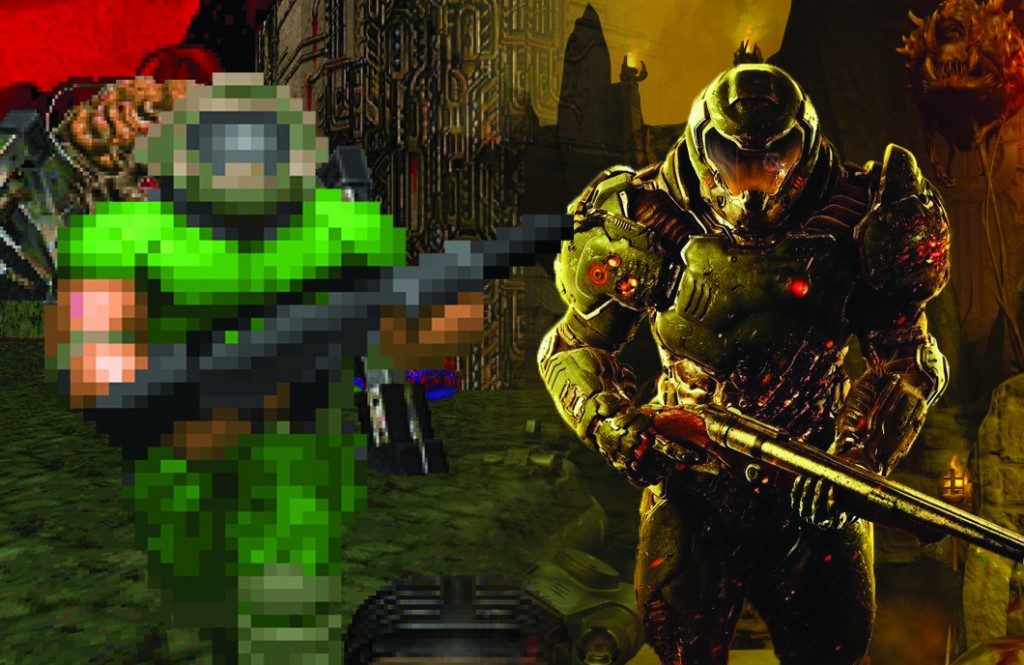
How the graphics race changed gaming
By Adam Tatelman, Arts Editor
What’s uncanny about the advancement of graphics in games is the way it has both spurred and restrained game design. Early on, the push for better looking games resulted in more powerful machines that could process more complex and interesting mechanics. Graphics didn’t just change the way games looked—they helped change what games could do, and the way they were marketed. However, relatively little has changed in terms of gameplay over the last three generations. While games may look better, the ideas and mechanics on hand have barely changed since the early 2000s.
Most people think that Nintendo was the first company to market a home gaming console. That’s not exactly true. The very first home console for television was the Magnavox Odyssey, released in 1972. It was later licenced to Nintendo in 1974, and was beat out by the Atari 2600, which reigned as the sales king of the second console generation. The NES wasn’t released in North America until 1983, inspiring rival company Sega to release the Master System two years later. This was the beginning of a free market arms race for even better graphics technology that changed the face of gaming forever.
To explain what a “bit” is in computer parlance would be extremely boring, so suffice it to say that it’s a way of expressing how much information your console can process. The NES and Master System were 8-bit consoles, and their graphics were very primitive. As such, they had to rely on abstract ideas and imagery to express their visuals. How did we know Mario was a human? Well, he looked like a blocky person. The animated blocks illustrating Mario are called pixels; together, they are called sprites. These are the very building blocks of everything we call graphics today.
In the fourth console generation, Nintendo and Sega moved from 8- to 16-bit consoles with the Super Nintendo and the Sega Genesis. This allowed for a higher pixel count and more detailed and colourful graphics, smoother animations, and forays into experimental realms like multi-layered tile backgrounds and pseudo-3-D scaling. This advancement allowed for a commercial explosion the likes of which had never been seen in gaming. Gaming companies started to market themselves on the power of their consoles, in addition to their extensive game libraries.
In their zest to outpace Nintendo’s graphical advances, Sega engineered a number of poor add-ons to the Genesis. It began with the Sega CD, the first home console with CD-ROM support. Unfortunately, the game library was small and obscure, and the CD disk space was mostly clogged by full motion video cutscenes with awful resolution. The Sega 32X promised the first 32-bit games in full 3-D. Though its transition from pixels to polygons laid the groundwork for future 3-D games, Sega’s technology was not yet advanced enough to make those games look good.
The release of the Nintendo 64, the first 64-bit console offering decent-looking full 3-D games, marked a turning point in the graphics race. The Sega Saturn was edged out by the Sony PlayStation, which improved on many of the ideas that the Sega CD flubbed. This transition to 3-D as the gold standard for graphics sparked off a new generation of console wars, this time between Nintendo, Sony, and the newcomer Microsoft. Three generations later, the games industry as we know it had come into being.
Most are quick to cry “gameplay over graphics” without realizing that graphics have been a part of the driving force behind innovation in design. But it is also important to realize when a limit has been reached. Like the 32X, the modern industry is what happens when presentation is prioritized above all else. Rampant sequelization and market oversaturation becomes inevitable, because a sustainable quality apex has been reached, and the race for graphical quality no longer brings technical innovation with it.
Consider the printing press by way of analogy. The first text ever printed was the Bible. For years after, the presses made advances in print quality, but the most commonly printed text was still the Bible. The solution for games is to stop inventing prettier new fonts for the Bible to be printed in, and start printing things other than the Bible.

